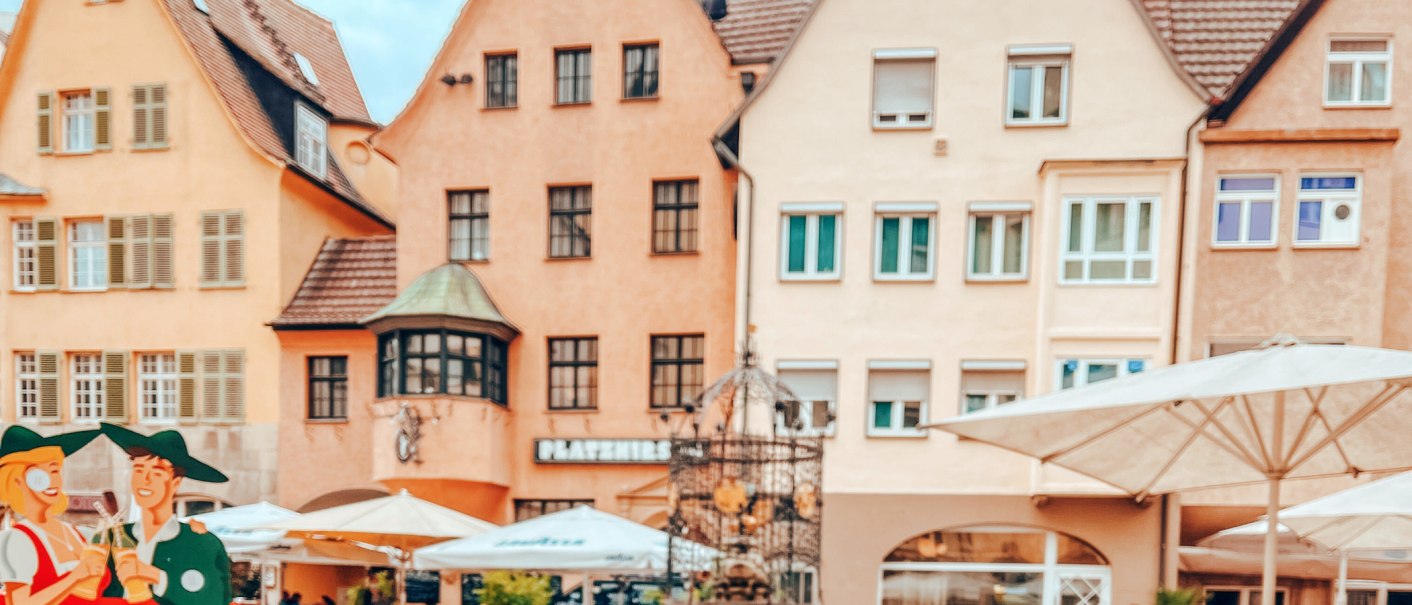Quarter around the Hans-im-Glück Fountain Stuttgart
A trendy quarter in Stuttgart's old town: away from Königstraße, the area around the Hans-im-Glück-Brunnen fountain has developed into a popular nightlife district in recent years. Whether for breakfast under palm trees, lunch in the sun or partying until the early hours of the morning - especially in summer, the charming square delights with its southern flair!
The attitude to life: Dolce Vita. The sound: street musicians, laughter and snatches of music. The atmosphere: unique!
In May 1909, exactly 100 years ago, the quarter around the Hans-im-Glück-Brunnen was inaugurated in Stuttgart's city centre after three years of renovation. This had been preceded by extensive reconstruction measures in the course of which dozens of houses had been demolished and replaced by new ones.
After the oldest parts of Stuttgart's old town had developed into a neglected quarter in the course of the 19th century, with unhygienic housing, little light and air supply and a high risk of fire and epidemics, a "new" old town was created on the initiative of the banker and social reformer Eduard Pfeiffer on Geißstrasse, Steinstrasse and Eberhardstrasse. Pfeiffer pursued the goal of making living and shopping, trade and traffic in the core town attractive again.
The new buildings had created a homely ambience along winding streets with high gables and arcades, fountains, oriels and figural decoration. The more than 30, very diversely designed buildings showed different roof shapes and façade details and were decorated with fairy tale motifs, animal figures and façade paintings. No two houses were alike, and yet they blended together to form a harmonious picture. Despite many changes, the charm of the neighbourhood has survived to this day.
The square by the Hans im Glück fountain was created in this form 100 years ago. How did it come about that the square still looks like a medieval doll's house? Fairy-tale figures adorn gables, roofs and the fountain in the middle of the square. The houses stand modestly next to each other, none protrudes, none destroys the harmony of the quarter. When the inner-city quarter was redeveloped from the ground up at the time, the city planners staged an ideal world of the middle classes.
Nowhere are there more restaurants and bars crowding into less space than here: The Kottan offers Austrian cuisine, the Deli relaxed coffee culture, the Mata Hari is where the younger ones meet. The square has its own sound: its sound is woven together from the clinking of glasses, laughter and the clacking of heels crashing over the asphalt.
Six bronze medallions depict scenes from the Grimm fairy tale of Hans, who only found happiness when he was rid of all his possessions.
Of all places, Stuttgart is rich in charm and beauty in the place of the happy have-not. The fountain figure embodies a coarse peasant boy from the Fildern in a short jacket trimmed with silver buttons, whom the artist had met in the slaughterhouse. A pig and six small ducks, which serve as gargoyles, cavort at the boy's feet. On the rim of the fountain bowl rises a lattice-like wrought-iron surround with six bronze medallions that tell the fairy tale of the same name in pictures. Above this is an elaborately arched wrought-iron canopy, from the top of which rises a four-leaf clover


